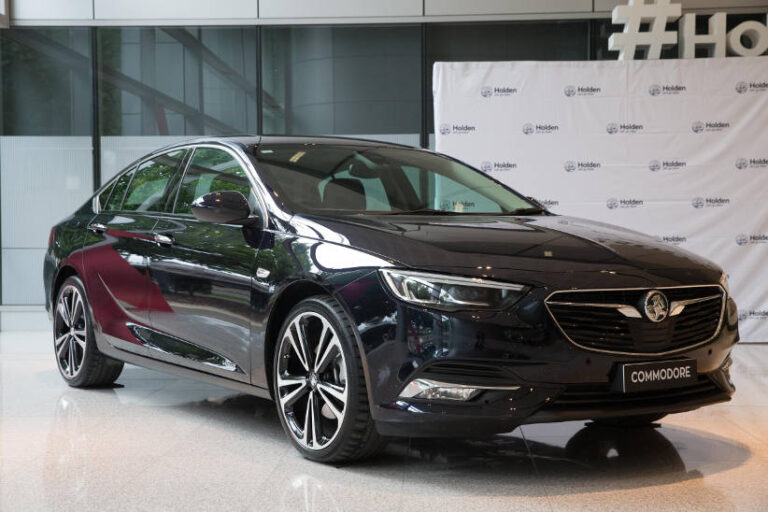– By Marc Sibbald –
I know, I know. It’s front wheel drive. It’s not a V6 or V8. It’s made overseas. And all these things should matter if your buying a family vehicle and you were born before 1990.
But since 2011 (when the Mazda3 was the top seller) the Commodore was predominately a fleet vehicle purchased by businesses and driven by sales representatives. So when reviewing the 2018 model I took this perspective and asked myself, ‘can this still work as a sales reps car?’.
And the answer was a resounding – YES!
I drove the RS Sportswagon 2.0 litre turbo petrol and the Calais Liftback 2.0 litre turbo diesel. The popular vote in the FAN office went to the RS though both were very drivable. After spending a week on the road in each I could easily swap my VF SV6 for either one. And to make sure I wasn’t favouring the new, younger, sexier model; I drove a VFII SV6 Black for a day as a more extensive comparison.
There are some of you that are still thinking about the Commodore’s ancestry in motorsport, the sound of a V8 and performance that only comes from a rear wheel drive vehicle. But these are all emotions. As Fleet Managers we take emotions out by using a Fit for Purpose matrix and Whole of Life Cost analysis.
So I need to bring our attention back to the reason why you would consider a Commodore. It’s a large multi-purpose vehicle that is perfect for a fleet. It performs well in metro areas but excels well in regional areas when you’re in the driver’s seat for four to six hours a day. It’s large enough to carry five adults with luggage comfortably. Employees taller than six foot, or weighing more than 100 kgs, will fit in it. And it’s full of safety gear as standard and you can upgrade to get more.
Times have changed so fleets will no longer run 100% Commodore. But there’s still a place for this car in most fleets and Holden is offering plenty of luxury options for the senior manager below the price of the large Euro sedans.
Driving the RS Sportswagon was a pleasure. The first thing I noticed was the seats were more comfortable than the VF with a handy seat extender to support the hamstrings on longer drives. The dash is subtle and practical. Unlike most new vehicles there’s no huge TV screen sticking up in the middle. It’s almost minimalistic though the screen is an ample size and displays all the relevant information.
I didn’t like the cup holders and storage. The cup holder is too deep for a large coffee cup which is how most fleet drivers would start their day. It would be great for a soft drink or water bottle though there is space in the doors for large containers so you don’t need it in the centre. And the glovebox is so small I couldn’t transfer everything from my VF into it. The centre console storage was also smaller but big enough for my tissue box.
The collision warning system was great. I have driven a few vehicles with a similar system though this one just seemed better. I found it warning me several times in traffic and potentially saved at least one insurance claim. In the Commodore its a warning noise and flashing light that comes from the dash in front of the driver where it meets the windscreen. It seems less obtrusive yet effective without being annoying.
A new safety feature in the Commodore (and being included is most new car models in 2018) is Lane Keeping Assist (LKA). It’s a subtle tug on the wheel to keep you within the lines when travelling over 60km per hour. While this is a great feature it will require Fleet Managers and dealerships to do better driver inductions and training. If you haven’t used it before it could frighten or scare some drivers.
After experiencing several new Commodore models in the last 20 years I think this is just another evolution. An improvement on the old model with different styling and handling characteristics. As a company vehicle it does what you’d expect if a large car is ‘fit for purpose’ in your fleet. Well done Holden!







